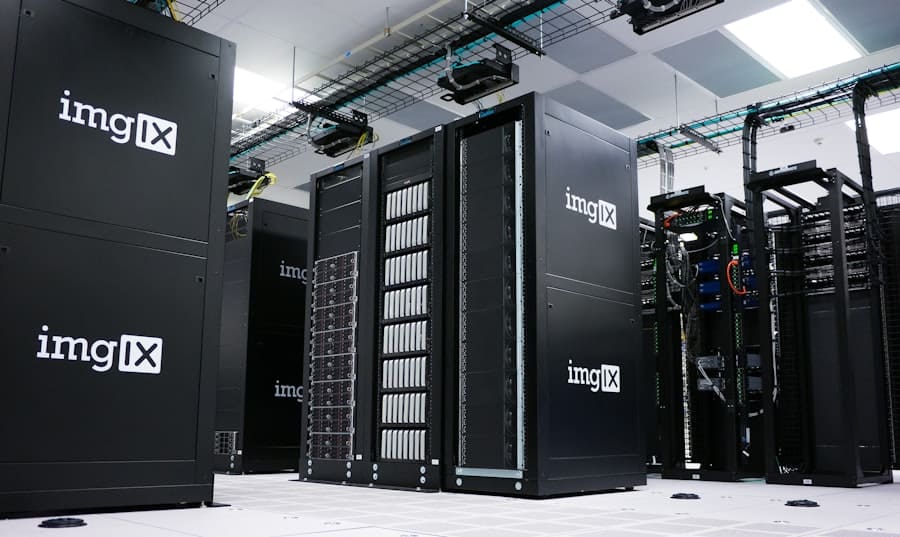Cloud security networks play a critical role in today’s digital landscape. As organizations and individuals increasingly rely on cloud computing and storage, the protection of sensitive data becomes paramount. Cloud security networks encompass a range of measures and protocols designed to safeguard information stored in the cloud from unauthorized access, data breaches, and other security threats.
The scope of data protected by cloud security networks is vast, including personal information, financial records, intellectual property, and various other types of sensitive data. These security measures are essential for maintaining the confidentiality, integrity, and availability of cloud-based information. Beyond data protection, cloud security networks are crucial for ensuring the reliability and availability of cloud services.
Service interruptions or downtime can significantly impact businesses, potentially resulting in decreased productivity, financial losses, and damage to customer relationships. A robust cloud security network is therefore vital for maintaining consistent access to cloud services and preserving business continuity. The importance of cloud security networks extends to both commercial entities and individual users who depend on cloud computing and storage for their data management needs.
As cloud adoption continues to grow, understanding and implementing effective cloud security measures becomes increasingly important for protecting digital assets and maintaining trust in cloud-based systems.
Key Takeaways
- Cloud security network is crucial for protecting sensitive data and preventing unauthorized access.
- Common threats to cloud data security include malware, data breaches, and insider threats.
- Best practices for securing data in the cloud include encryption, regular data backups, and access control.
- Choosing the right cloud security provider involves evaluating their security measures, compliance certifications, and reputation.
- Implementing multi-factor authentication adds an extra layer of security to prevent unauthorized access to cloud data.
- Educating employees on data security protocols helps in preventing human errors and insider threats.
- Regularly monitoring and updating cloud security measures is essential to stay ahead of evolving security threats and vulnerabilities.
Common Threats to Cloud Data Security
There are several common threats to cloud data security that businesses and individuals need to be aware of. One of the most prevalent threats is unauthorized access to data. This can occur through various means such as phishing attacks, weak passwords, or exploitation of software vulnerabilities.
Once unauthorized access is gained, sensitive data can be stolen or manipulated, leading to significant consequences for the affected parties. Another common threat to cloud data security is data breaches. These breaches can occur due to inadequate security measures, insider threats, or targeted cyber-attacks.
When a data breach occurs, it can result in the exposure of sensitive information, financial losses, legal ramifications, and damage to an organization’s reputation. Additionally, malware and ransomware attacks pose a significant threat to cloud data security. These malicious software can infect cloud systems and cause data loss, encryption of files, or disruption of services.
Understanding these common threats to cloud data security is essential for implementing effective measures to mitigate these risks. There are several common threats to cloud data security that businesses and individuals need to be aware of. One of the most prevalent threats is unauthorized access to data.
This can occur through various means such as phishing attacks, weak passwords, or exploitation of software vulnerabilities. Once unauthorized access is gained, sensitive data can be stolen or manipulated, leading to significant consequences for the affected parties. Another common threat to cloud data security is data breaches.
These breaches can occur due to inadequate security measures, insider threats, or targeted cyber-attacks. When a data breach occurs, it can result in the exposure of sensitive information, financial losses, legal ramifications, and damage to an organization’s reputation. Additionally, malware and ransomware attacks pose a significant threat to cloud data security.
These malicious software can infect cloud systems and cause data loss, encryption of files, or disruption of services. Understanding these common threats to cloud data security is essential for implementing effective measures to mitigate these risks.
Best Practices for Securing Your Data in the Cloud

To secure your data in the cloud effectively, it is essential to implement best practices that address potential vulnerabilities and threats. One best practice is to encrypt your data both at rest and in transit. Encryption ensures that even if unauthorized access is gained, the data remains unreadable and unusable without the encryption key.
Additionally, implementing strong access controls and authentication mechanisms is crucial for securing your data in the cloud. This includes using multi-factor authentication, role-based access controls, and regular review of user permissions. Regularly backing up your data is another best practice for securing your data in the cloud.
In the event of a data breach or loss, having backups ensures that you can recover your information without significant disruptions. Furthermore, staying informed about security updates and patches for your cloud services and applications is essential for addressing potential vulnerabilities and weaknesses. By following these best practices and staying proactive about security measures, you can significantly enhance the security of your data in the cloud.
To secure your data in the cloud effectively, it is essential to implement best practices that address potential vulnerabilities and threats. One best practice is to encrypt your data both at rest and in transit. Encryption ensures that even if unauthorized access is gained, the data remains unreadable and unusable without the encryption key.
Additionally, implementing strong access controls and authentication mechanisms is crucial for securing your data in the cloud. This includes using multi-factor authentication, role-based access controls, and regular review of user permissions. Regularly backing up your data is another best practice for securing your data in the cloud.
In the event of a data breach or loss, having backups ensures that you can recover your information without significant disruptions. Furthermore, staying informed about security updates and patches for your cloud services and applications is essential for addressing potential vulnerabilities and weaknesses. By following these best practices and staying proactive about security measures, you can significantly enhance the security of your data in the cloud.
Choosing the Right Cloud Security Provider
| Security Provider | Features | Compliance | Cost |
|---|---|---|---|
| Provider A | Encryption, IAM, DLP | PCI DSS, HIPAA | |
| Provider B | Firewall, SIEM, WAF | ISO 27001, GDPR | |
| Provider C | VPN, IDS, Penetration Testing | SOC 2, FISMA |
When it comes to securing your data in the cloud, choosing the right cloud security provider is crucial. A reputable provider will offer robust security measures, compliance with industry standards and regulations, and a track record of reliability and trustworthiness. It is essential to thoroughly research potential providers and assess their security protocols, certifications, and customer reviews before making a decision.
Additionally, consider the specific security needs of your organization when choosing a cloud security provider. Different providers may offer varying levels of security features and customization options to meet your unique requirements. Furthermore, ensure that the provider offers transparent communication about their security practices and has a responsive support system in place for addressing any security concerns or incidents.
By choosing the right cloud security provider, you can have confidence in the protection of your data in the cloud. When it comes to securing your data in the cloud, choosing the right cloud security provider is crucial. A reputable provider will offer robust security measures, compliance with industry standards and regulations, and a track record of reliability and trustworthiness.
It is essential to thoroughly research potential providers and assess their security protocols, certifications, and customer reviews before making a decision. Additionally, consider the specific security needs of your organization when choosing a cloud security provider. Different providers may offer varying levels of security features and customization options to meet your unique requirements.
Furthermore, ensure that the provider offers transparent communication about their security practices and has a responsive support system in place for addressing any security concerns or incidents. By choosing the right cloud security provider, you can have confidence in the protection of your data in the cloud.
Implementing Multi-factor Authentication for Added Security
One effective way to enhance the security of your data in the cloud is by implementing multi-factor authentication (MFA). MFA adds an extra layer of protection by requiring users to provide multiple forms of verification before accessing their accounts or sensitive information. This typically involves something they know (such as a password), something they have (such as a mobile device), or something they are (such as biometric authentication).
By requiring multiple factors for authentication, MFA significantly reduces the risk of unauthorized access even if one factor is compromised. Furthermore, MFA can be easily integrated into various cloud services and applications to provide added security without significant disruptions to user experience. It is an effective measure for preventing unauthorized access through stolen credentials or brute force attacks.
By implementing MFA for accessing your cloud resources, you can significantly enhance the overall security posture of your organization’s data in the cloud. One effective way to enhance the security of your data in the cloud is by implementing multi-factor authentication (MFA). MFA adds an extra layer of protection by requiring users to provide multiple forms of verification before accessing their accounts or sensitive information.
This typically involves something they know (such as a password), something they have (such as a mobile device), or something they are (such as biometric authentication). By requiring multiple factors for authentication, MFA significantly reduces the risk of unauthorized access even if one factor is compromised. Furthermore, MFA can be easily integrated into various cloud services and applications to provide added security without significant disruptions to user experience.
It is an effective measure for preventing unauthorized access through stolen credentials or brute force attacks. By implementing MFA for accessing your cloud resources, you can significantly enhance the overall security posture of your organization’s data in the cloud.
Educating Employees on Data Security Protocols

An often overlooked aspect of securing data in the cloud is educating employees on data security protocols. Employees are often the first line of defense against potential security threats such as phishing attacks or unauthorized access attempts. By providing comprehensive training on best practices for handling sensitive information, recognizing potential threats, and following secure protocols for accessing cloud resources, employees can play a crucial role in maintaining a secure environment for organizational data.
Additionally, regular reminders and updates on evolving security practices and potential threats can help employees stay informed and vigilant about protecting company data in the cloud. Encouraging a culture of accountability and responsibility for data security among employees can significantly reduce the risk of human error or negligence leading to potential breaches or compromises. By investing in employee education on data security protocols, organizations can strengthen their overall defense against potential threats to their data in the cloud.
An often overlooked aspect of securing data in the cloud is educating employees on data security protocols. Employees are often the first line of defense against potential security threats such as phishing attacks or unauthorized access attempts. By providing comprehensive training on best practices for handling sensitive information, recognizing potential threats, and following secure protocols for accessing cloud resources, employees can play a crucial role in maintaining a secure environment for organizational data.
Additionally, regular reminders and updates on evolving security practices and potential threats can help employees stay informed and vigilant about protecting company data in the cloud. Encouraging a culture of accountability and responsibility for data security among employees can significantly reduce the risk of human error or negligence leading to potential breaches or compromises. By investing in employee education on data security protocols, organizations can strengthen their overall defense against potential threats to their data in the cloud.
Regularly Monitoring and Updating Your Cloud Security Measures
Securing your data in the cloud is an ongoing process that requires regular monitoring and updating of your security measures. This includes regularly reviewing access logs and audit trails to identify any unusual activity or potential security incidents. By staying vigilant about monitoring user activities within your cloud environment, you can quickly detect any unauthorized access attempts or suspicious behavior.
Furthermore, staying proactive about updating your cloud security measures is essential for addressing new vulnerabilities or emerging threats. This includes regularly applying patches and updates to your cloud services and applications to ensure that they are equipped with the latest security features and protections against potential exploits. Additionally, conducting regular security assessments and penetration testing can help identify any weaknesses or gaps in your existing security measures that need to be addressed.
Securing your data in the cloud is an ongoing process that requires regular monitoring and updating of your security measures. This includes regularly reviewing access logs and audit trails to identify any unusual activity or potential security incidents. By staying vigilant about monitoring user activities within your cloud environment, you can quickly detect any unauthorized access attempts or suspicious behavior.
Furthermore, staying proactive about updating your cloud security measures is essential for addressing new vulnerabilities or emerging threats. This includes regularly applying patches and updates to your cloud services and applications to ensure that they are equipped with the latest security features and protections against potential exploits. Additionally, conducting regular security assessments and penetration testing can help identify any weaknesses or gaps in your existing security measures that need to be addressed.
In conclusion, understanding the importance of cloud security network is crucial for safeguarding sensitive data stored in the cloud from potential threats such as unauthorized access, data breaches, malware attacks, and more. Implementing best practices such as encryption, strong access controls, regular backups, staying informed about security updates, choosing the right cloud security provider, implementing multi-factor authentication (MFA), educating employees on data security protocols, regularly monitoring user activities within your cloud environment are all essential steps towards securing your data effectively in the cloud.
Choosing a reputable provider with robust security measures will offer peace of mind regarding the protection of your valuable information stored in the cloud.
By staying proactive about updating your cloud security measures regularly through monitoring user activities within your environment will help detect any unauthorized access attempts or suspicious behavior.
Overall investing time into understanding these important aspects will help protect sensitive information from being compromised while stored in a digital space such as a Cloud Network.
If you’re interested in learning more about the intersection of technology and security, you may want to check out this article on blockchain technology and its potential impact on cloud security networks. Blockchain has been hailed as a secure and decentralized way to store and transfer data, making it a relevant topic for those concerned with protecting sensitive information in the digital realm.
FAQs
What is cloud security network?
Cloud security network refers to the set of policies, technologies, and controls that are put in place to protect data, applications, and infrastructure in a cloud computing environment.
Why is cloud security network important?
Cloud security network is important because it helps to ensure the confidentiality, integrity, and availability of data and resources in the cloud. It also helps to protect against unauthorized access, data breaches, and other security threats.
What are some common threats to cloud security network?
Common threats to cloud security network include data breaches, unauthorized access, malware, DDoS attacks, and insider threats. These threats can compromise the security and privacy of data and resources in the cloud.
What are some best practices for securing a cloud network?
Some best practices for securing a cloud network include using strong encryption, implementing multi-factor authentication, regularly updating and patching systems, monitoring for security incidents, and training employees on security awareness.
What are some popular cloud security network solutions?
Popular cloud security network solutions include cloud access security brokers (CASBs), secure web gateways, cloud-based firewalls, and cloud security posture management (CSPM) tools. These solutions help to protect cloud environments from various security threats.
How can businesses ensure the security of their cloud network?
Businesses can ensure the security of their cloud network by conducting regular security assessments, implementing strong access controls, encrypting sensitive data, and working with trusted cloud service providers that have strong security measures in place.











Leave a Reply